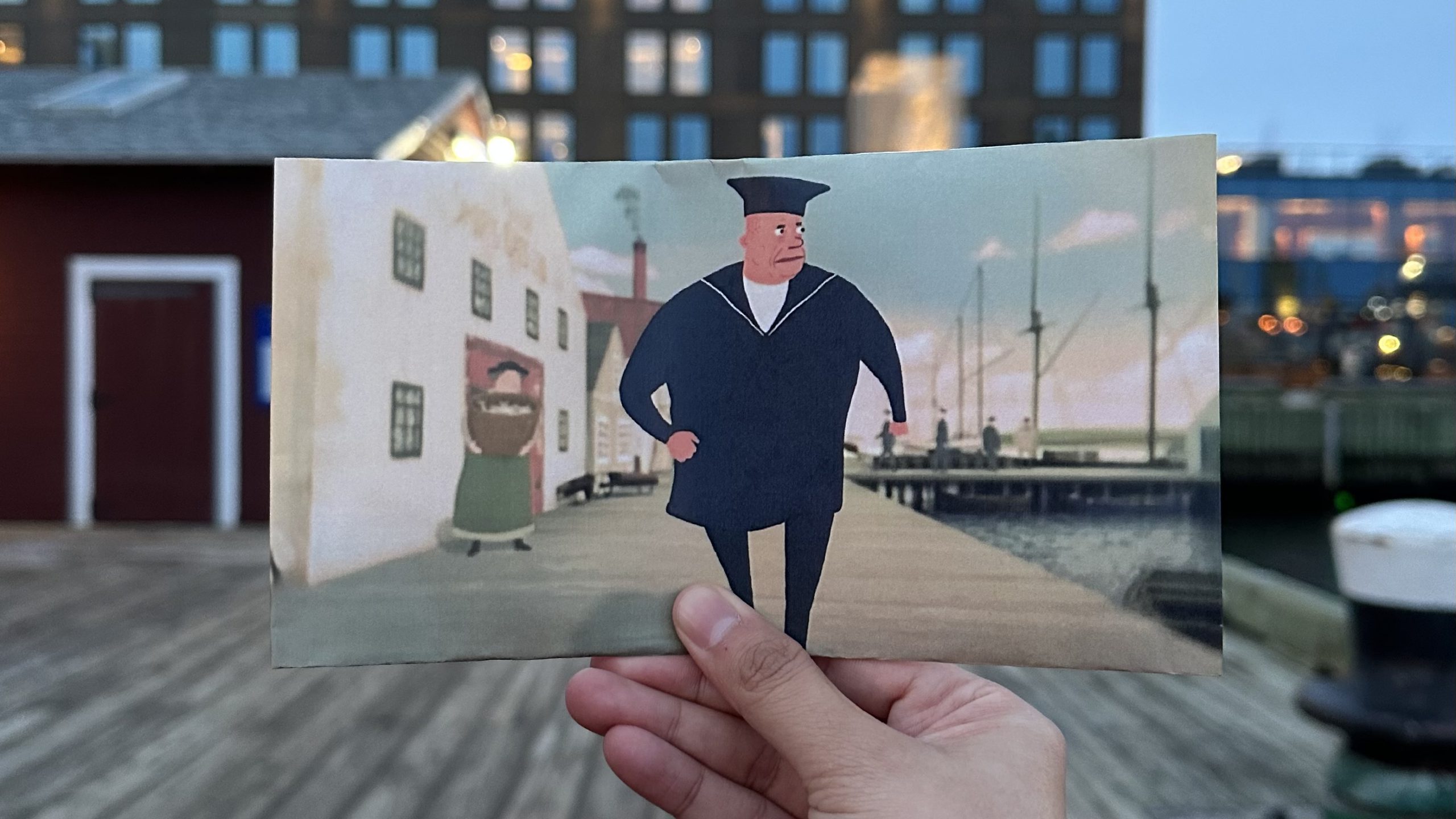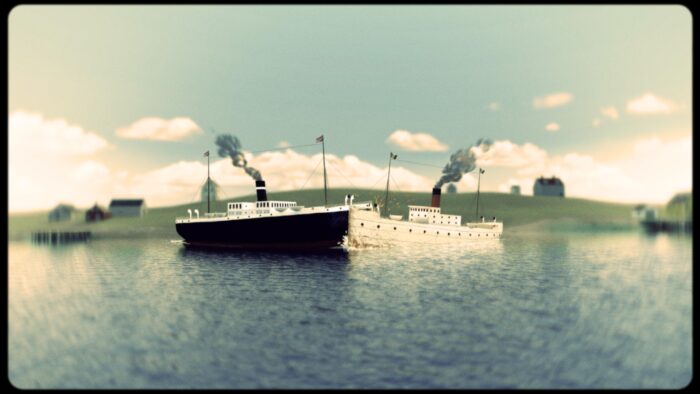In Oscar-nominated film ‘The Flying Sailor,’ history and imagination collide
Short film inspired by naked, airborne seafarer from Halifax explosion

caption
Real-life surroundings and archival footage helped inform the setting of The Flying Sailor.More than a hundred years later, the 1917 Halifax explosion is still making news.
One of the stories from the blast is being told through animation: A British sailor was on duty aboard a nearby ship when the force of the blast sent him flying through the air. He landed on the slopes of Needham Hill, naked and injured – but alive.
The Flying Sailor, a cartoon based on the incident, is nominated for Best Animated Short Film at the 95th Academy Awards. The nominees were announced on Tuesday.
The film was written, directed and animated by a duo based in Calgary. Wendy Tilby and Amanda Forbis have collaborated on two animated short films, When The Day Breaks (1999) and Wild Life (2011). Both were nominated for Oscars.
About their third time, Tilby said, “I don’t think it gets old, to be nominated. We didn’t really know what our odds were. So it’s exciting.”
The Flying Sailor uses mixed media to achieve its distinctive visual style: 2D and 3D animation are combined with live-action footage to bring the titular sailor on a journey through time and space. Forbis said they were going for a “toy train set look,” roughly following the geographical features of the area and stylizing them.
The pair was also inspired by hand-tinted vintage postcards. “We love that look, we love the colour and the grain and the deep blacks, and so that was a big inspiration to us,” said Forbis. “Another thing of primary importance was that the sailor should stand out from this background quite a bit. So we love the idea of this pink, naked sailor flailing around in the sky.”
Critics and animation buffs aren’t the only ones talking about this film. Local historian Joel Zemel has written two books about the explosion. “I really did enjoy it,” Zemel said, adding “especially that image at the end with the fish,” referring to a scene where the stunned sailor locks eyes with a dying fish.
“That was a powerful point,” said Zemel. “He survived. And the fact that he survived is really what that story is about.”
Tilby and Forbis were initially inspired during a trip to the Maritime Museum of the Atlantic, where they learned about one sailor’s unbelievable account of being flung through the air and losing his clothes in the process.
The sailor receives a dedication in the credits of the film, which names him as Charlie Mayers; Zemel said this is a misnomer. The man’s full name was Charles John Mayers, third officer of the SS Middleham Castle. He was only 22 at the time.
Zemel points out where the filmmakers took artistic licence. The collision in the film was fairly accurate, although the explosion was not instantaneous. It occurred 20 minutes later when the SS Mont Blanc, which had been carrying explosives, beached herself near Pier 6 in the city’s north end.
Also, said Zemel, Mayers was not on the dock, but aboard his ship. At the moment of the blast, his vision went dark, and he had “a revolving sensation.”
Mayers did lose his clothes, but somehow kept his boots. And while the dedication in the film says he flew two kilometres, Zemel said it was only about half a mile.

caption
Halifax historian Joel Zemel said the position of the two ships in the film were historically accurate.Mayers landed on the east side of Needham Hill, where he was eventually picked up and taken to hospital. His firsthand account helped create an accurate picture of the disaster.
Tilby said the aspect she and Forbis wanted to focus on in the film was Mayers’ near-death experience as he flew through the air.
“We expanded it into a few minutes and took him through an arc of going from terror to bliss, then that moment when basically he returned to his body and he’s going to survive,” she said.
Zemel said he hopes the short will encourage people to find out more about the true stories behind it.
“If people know the truth behind what happened to Charles John Mayers, I think that the artistic impression offered by the creators of this little film is that much more enhanced,” he said. “It doesn’t take away from the film, it adds to the film.”
The Oscars ceremony is on March 12. The Flying Sailor can be viewed on the NFB website or YouTube.
About the author

Sabine Antigua
Sabine Antigua was born and raised in Manila, Philippines and previously lived in Sydney, Australia before pursuing the one-year Bachelor of...